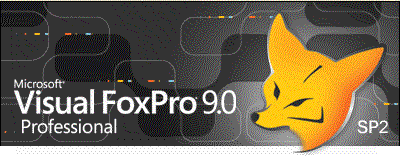The Future of Visual FoxPro® Professional*
To be blunt, there is no future for Visual FoxPro (VFP). The latest version of VFP (Version 9.0) was last updated back in 2010, with all support for it from Microsoft officially ended in 2015. While VFP can still be obtained by subscribing to MSDN (Microsoft Developer Network), and Microsoft also continues to provide VFP documentation on their website, any hope that it will somehow live on has long since vanished.
The problem, of course, is that many robust database systems were written in VFP and continue to be used. The 32-bit system can run under the latest version of Windows (Windows 10) without issue, and will be able to do so for some time to come.
The question then isn't “What is the future of VFP?”, but rather, “What is the future of VFP applications?” This is the question which had been of major concern to us at Mendon Associate Inc. (MAI) until a path forward was finally decided on more than three years ago.

The options under consideration were:
- Go with one of the several XBase programming languages out there, a couple of which have positioned themselves as VFP replacements.
- Create a proprietary developed desktop application written in either C++ or C#.
- Create a proprietary developed cloud application written in either on ASP.Net WebForms or ASP.Net MVC.
- Shut the lights off at the end of the day and call it a career.
Except for the last option, any of these alternatives require the re-writing of hundreds-of-thousands of lines of code developed over 20 years of working with VFP in one form or other. This is true of even those software packages promoting themselves as direct VFP replacements. Note that the last option was not seriously considered as no one at MAI is ready to retire just yet.
The path forward decided on was a three-stage hybrid approach:
- Stop using the native VFP database files (DBF, CDX and FTP), and switch instead to SQL Server at the backend. This requires modifying existing VFP applications to use views that access the new backend, which is easily done given the built in VFP support for SQL Server.
- Migrate out all the support data editing screens for the related support tables to both MVC and in selected cases WinForms (Windows desktop forms), developing a hybrid option based on operator roles.
- Migrate out all the remaining report screens and forms to a new cloud based application platform.
Moving the backend to SQL Server, especially leveraging new Azure cloud offerings, provides a short term quick interim fix, with a clear path towards a modern cloud based solution. Moving the balance of screens and programming over a longer time to a true cloud based solution provides time to convert the library of codes at a rate that is attainable within resources constraints.
For those still using the vast array of custom database applications out there written in VFP, consider these steps to facilitate migrating larger applications overtime as budgets allow.
Mendon Associates Inc. has been providing solutions written in VFP for over 20 years. We continue to undertake new development and application maintenance in the VFP environment. If you have an existing VFP application, we can provide services to assist you in upgrading or transferring to a new environment. Even if it is converting VFP based data files to SQL Server, or other back ends, consider calling MAI for assistance.
* All trademarks, trade names, or logos displayed or mentioned within this website are the property of their respective owners and presented for information and description only. Mendon Associates Inc. (MAI) makes no claim of ownership to any of these trademarks, trade names, or logos, except for the MA logo and names of the specific software solutions developed and sold by MAI (i.e., MA Circulation Manager and MA Association Manager).
Specifically, Visual FoxPro®, SQL Server, Azure, ASP.Net, WinForms, among others, are the registered trademarks of Microsoft Corporation.
